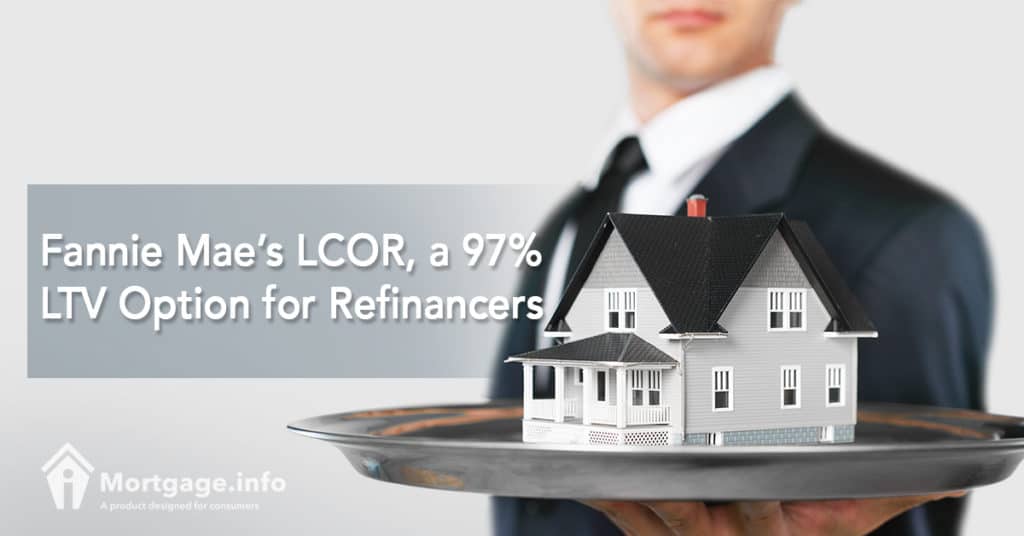It’s not just in purchase loans where low downpayments and high LTVs are the norm. Refinance mortgages can allow up to 97% loan-to-value ratio or LTV such as Fannie Mae’s limited cash-out refinance. LCOR is among the GSE’s expanded 97% LTV options for qualified homebuyers and homeowners. How do you qualify for one? [sc_content_link label=”Where do you find a lender? Click this button.”]
LTVs and LCORs
LTV is the ratio between your outstanding loan balance and the value of your home. Because of high LTVs, some homeowners who may have been eligible in all other respects to refinance find challenging to do so.
If your LTV ratios (loan-to-value, combined loan-to-value and high combined loan-to-value) are somewhere in the 97%, you could qualify for Fannie Mae’s LCOR whose requirements are set forth below.
Features and Requirements
Fannie Mae recently rolled out its latest version of the Desktop Underwriter®, which is the underwriting method used for LCORs. The DU® Version 10.1 contains updates that align with the Selling Guide based on previous announcements and the latest used here as a reference.
[sc_content_link label=”Shop and compare rates.”]
The LCOR 97% refinance option applies to existing loans owned or securitized by Fannie Mae. Your LTV can be greater than 95.01%, up to 97.00%.
To qualify for an LCOR, your property must be a one-unit, owner-occupied home. Condo units and planned unit developments (PUDs) are eligible but not manufacturing housing.
For homes that are listed for sale, their listing must be removed on or before the new mortgage’s disbursement date and that the borrowers must certify that they intend to occupy the home as their primary residence.
Eligible loans are fixed-rate mortgages with terms of up to 30 years. Mortgages with the following characteristics are not permitted: HomeStyle Renovation, HomeStyle Energy, high-balance, and adjustable-rate mortgages.
Fannie Mae requires that at least one of the borrowers has a credit score.
Acceptable Uses and Not
You can use an LCOR to modify your existing mortgage’s interest rate and/or repayment term. The new loan proceeds can go toward the payoff of the existing mortgage or the construction costs incurred in single-closing construction-to-permanent transactions.
You can include closing costs, points, prepaid items and to some extent, real estate taxes into the limited cash-out refinance transaction.
But your cash back is limited to whichever is lesser of 2% of the new refi loan or $2,000. Your lender may give you refunds from overpaid fees and charges, which can be excluded from the cashback. These refunds must be duly accompanied by a statement identifying the refund and supporting documentation.
[sc_content_link label=”We can help you find a lender. Hit the orange button.”]

